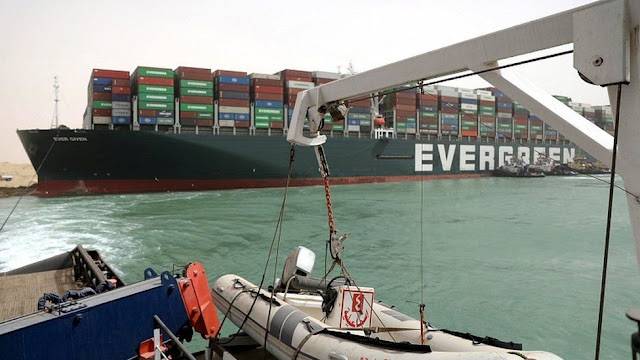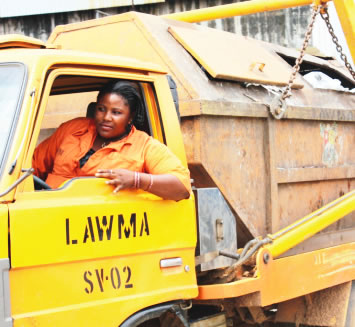WEDGING OF THE SUEZ CANAL; A CALL FOR MORE EXPERTIZE IN THE MARITIME INDUSTRY
On Tuesday 23rd of March 2021 a massive container vessel also called a mega ship MV “Evergiven” while transiting the Suez canal ran aground due to high winds, poor visibility amongst other factors. While this has caused the shipping trade billions of dollars, loss of huge man-hours, crazy Insurance claims and standstill in shipping trade between Europe and Asia. It remains a huge cause of concern that at this time and age a vessel can cause severe disruptions to a major shipping route.
In the first place, it will not be out of place to say that the maritime industry is amongst, if not the most regulated industry in the world. Various conventions and counter conventions, publications and adjustments are being churned out year after year just to maintain this very important aspect of international trade.
From my findings transiting the Suez canal requires the use of a pilot, a near perfect employment of BRM (Bridge Resource Management) amongst other standing procedures. A ship pilot is beloved to be extensively trained, fit and focused for the very crucial task as this. On the bridge of a typical modern vessel like the “Evergiven” vessel lies a lot of navigational equipment which are I believe to be in good shape as the vessel is quite young and agile. She was actually built in 2018 to be precise. The radar onboard should have given both pilot and bridge crew a clear information on wind speed, direction, tide and vessel tolerance to any of these, but I want to believe that these were not adhered to. Sailing A vessel of this magnitude along a channel of water with a total length of 400m requires adequate care, expertise and observation of the weather situation.
Since it is a man-made or man adjusted body of water why did the captain or pilot not drop vessel anchor when they observed the vessel to be drifting off course. Dropping vessel anchor in a water that is only 20meters deep might have save not only billions of dollars being lost today but also the grounding of a mega ship on a very busy shipping route.
A typical vessel has what is called center of gravity. This is the point at which winds or other external forces can act on her. The question a professional will ask again is what is the center of gravity of this vessel? Was it above or below the waterline? If below which it should be for safety reasons, what was the distance between this point and the water she was sailing. Another factor we need to observe critically is the amount of free board this vessel was designed to take in addition to her payload. My findings reveal that when fully loaded, the vessel is about 14 storeys high above the water line. If this is the case then the builders leaves much to be desired. Guiding such a monster in the face of daunting sea winds and adverse weather conditions can very and uphill task if not catastrophic. The design of the vessel was flawed abinitio and this should not be repeated subsequently. Having a freeboard of over 20 meters in addition to the payload makes sailing in open sea and congested waters hard and extra care need to be be taken in order not to violate the COLREG convention amongst others.
Now that the vessel is grounded blocking trade on a very sensitive shipping route, infact the Suez canal is adjudged to be the busiest shipping route in the world. I would really not want to delve into the significance of this canal to international world trade in this article. However dislodging this huge water edifice requires a very practical step which I am yet to see being undertaken in this instance. I see an excavator trying to dig up sand to probably free up the bow of the ship while I commend the poor fellow operating this innocent equipment.I must say practically that this effort is just a coin in the ocean and a huge embarrassment not only to the Suez Canal Authority but also to the entire maritime industry at large. The structural features of the”Evergiven” includes the fact that the vessel currently weighs over 200,000 tons; that is over 2,000,000 KG. Someone please tell us how to an excavator can do so much to refloat her. I also see some suction vessels, dredgers, tugs amongst others being employed…. we all hope this works but if it doesn’t then the eventual solution is stated clearly in the next paragraph.
From my professional observation the eventual way out of this quagmire is very straight. The Suez Canal Authority should employ the services of empty sister of daughter container ships to reduce up to 70% of the”Evergiven” payload, instruct captain to dislodge any ballast water onboard and re-ballast after she’s refloated. Any other measure apart from the above will just be a child’s play as moving a 200,000 ton equipment with and undisclosed payload of TEUs is no joke at all.
In summary the maritime industry needs to put alot more expertise in ship building and crew training to avoid situation these. Shipping is the mitochondron of world trade and incidents like this can only mean one thing global disruptions in international trade and supply chain, rising cost of items as demand outweighs supply, fatigue and overreaction on the part of queueing traffic of vessel amongst others.
Segun Adekunle is a maritime professional. He writes from Lagos; Nigeria. You can reach me on petlinlogistics@gmail.com or adekunleolusegun450@gmail.com.
Thanks for your time.





Comments
Post a Comment